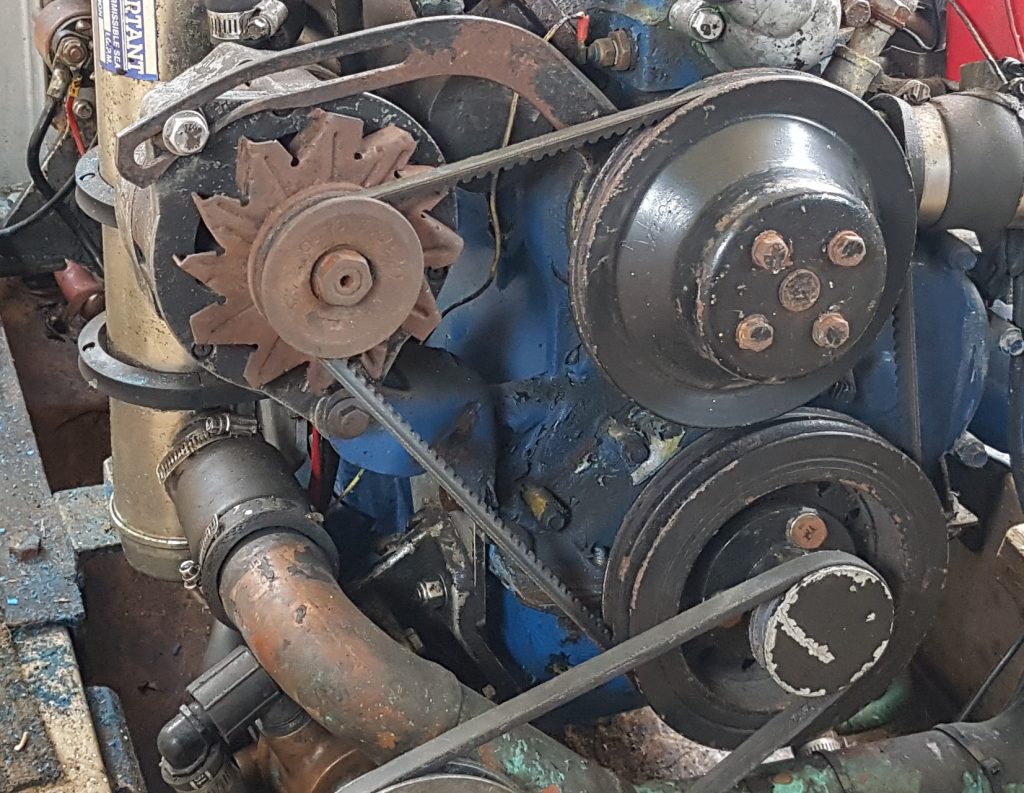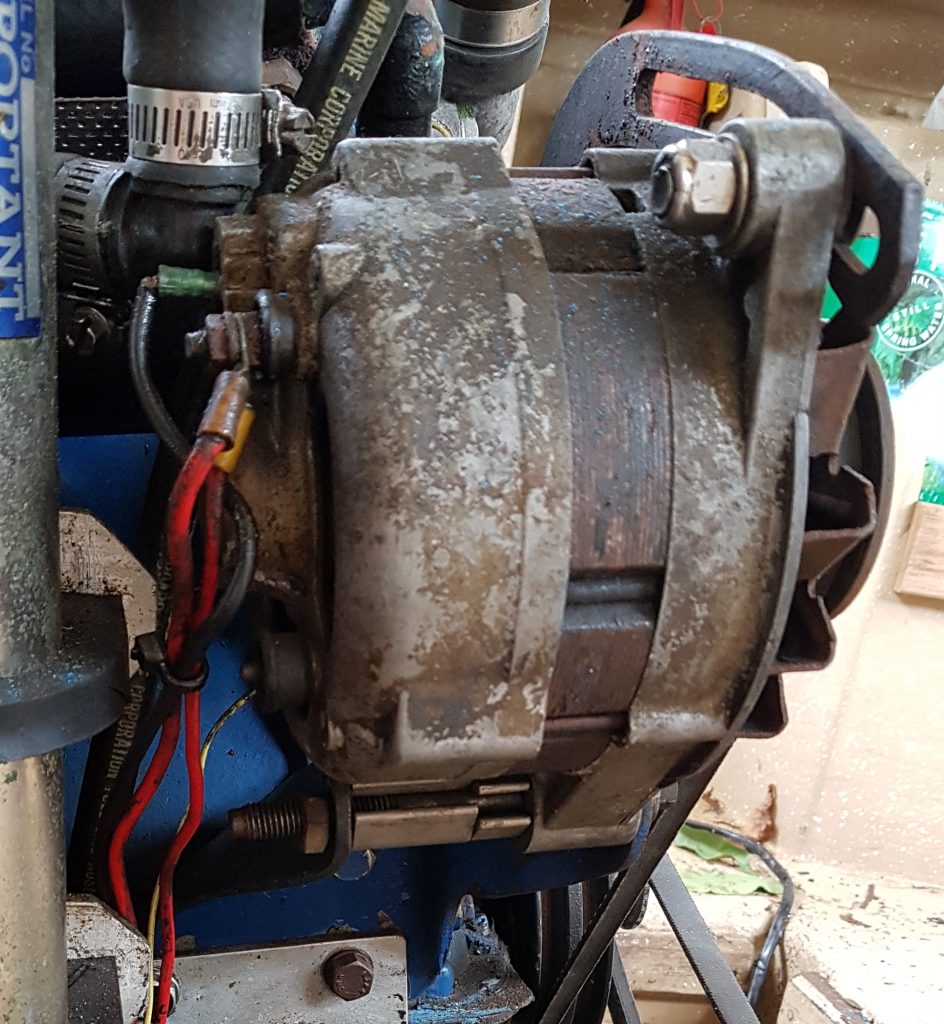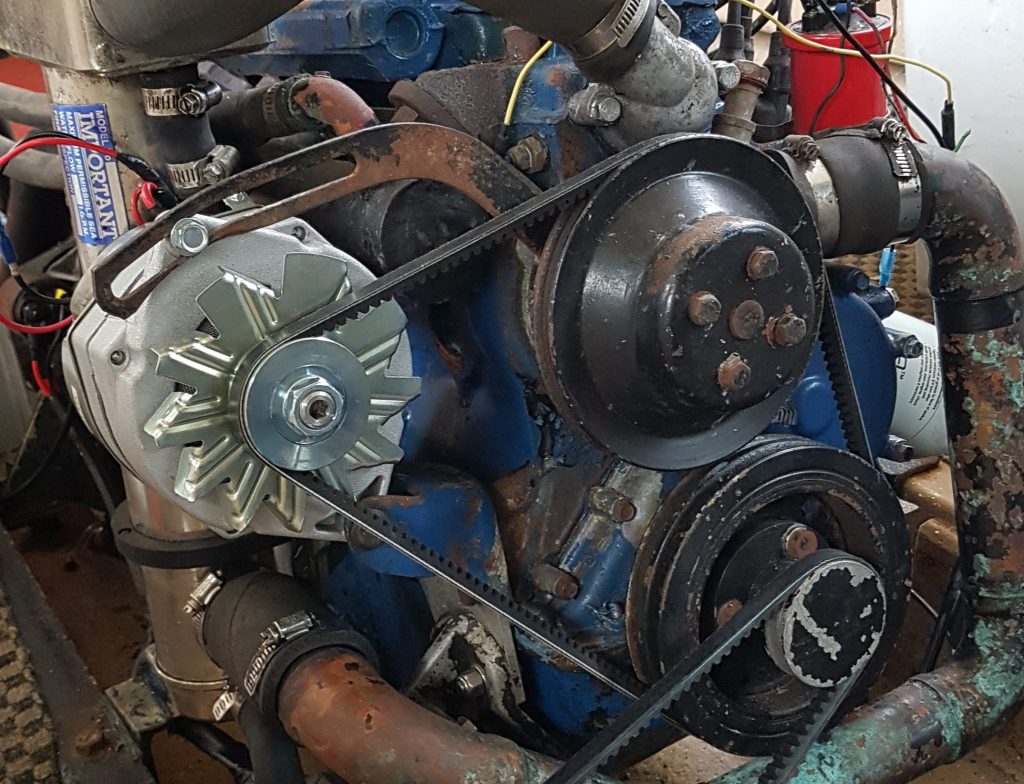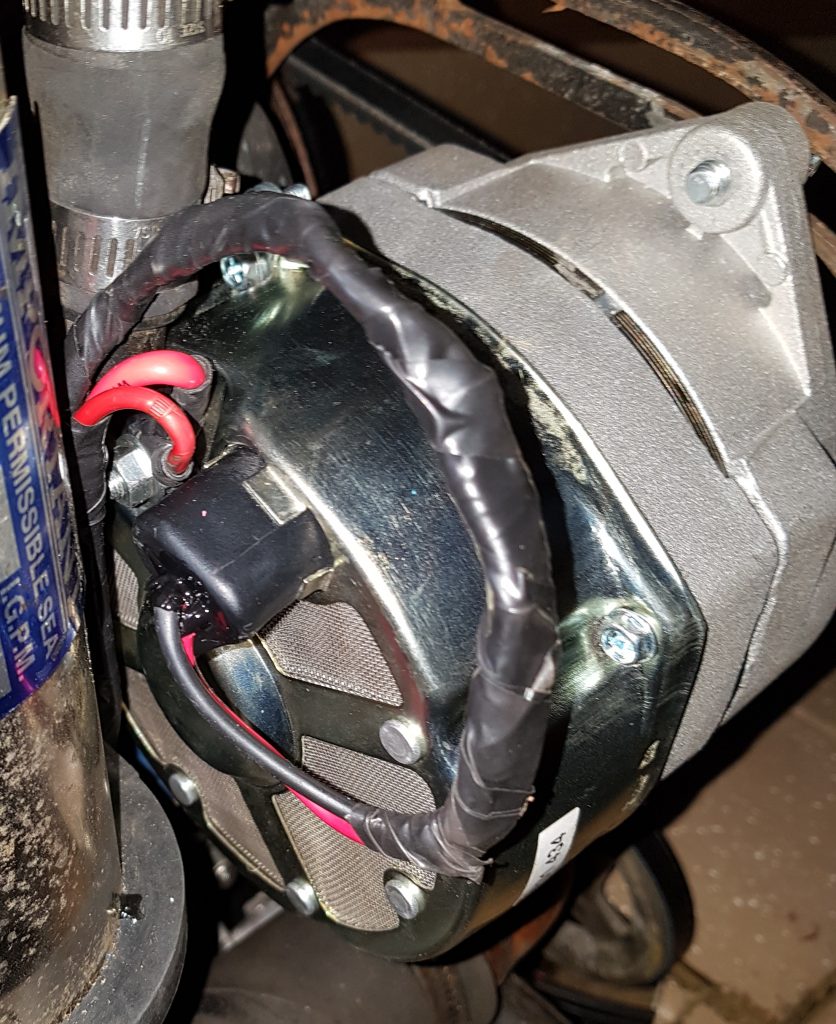So while testing the heat exchanger and thermostat were working I also found the alternator was not charging the battery. I’d noticed that the volt meter on the dash was not showing more than 12V and then confirmed this with a multimeter across the battery. Sigh one thing always leads to another.
The original alternator has certainly been in the boat for a long while and was in a rather decrepit condition, someone had also taken to the upper arm of the alternator bracket with a grinder to make clearance, a sure sign it was not original.
So the alternator fitted to the Nereus turns out was a Delco 10SI chassis with an external RE55 bosch regulator. I’m quite familiar with this regulator since they were originally designed and made at my current work place here in Australia. This was certainly a long way from being a standard issue Ford alternator.
There are still replacements for these Bosch external alternators around, but they are now well and truly obsolete and getting pricey and hard to get. Even if I know who made them. The Delco alternator frame also could not be pulled apart, it was rusted solid. I tried for a couple of days with heat and Penetrene to get the frame screws that hold the two halves of the unit together to release. Alas they were firmly stuck and right on the verge of stripping, so there was certainly no point in sending it off to be rebuilt.
However one of the attractions of the Ford 250ci inline 6-cylinder engine is the ancillary parts are all based on the Ford 302/351W Windsor (hint: Ford engineers were clever or lazy !?!), so many of the V8 ski boat marine accessories from the 1970’s to mid 1990’s will fit my engine. So a bit of poking around the internet and auto parts stores resulted in me purchasing a Sierra 18-5957 marine alternator from a marine service agency in Queensland that has surplus stock on eBay. It was half the price of a new automotive alternator from a well known German Manufacturer and about the same price as the cheap Chinese knockoffs. Decision made.
Fitting the new marine alternator up when it arrived was a complete doddle (meaning easy), all that I required was a small spacer to pack out the foot on the lower bolt from 51 to 76mm. I had some old GM spacers that were 32mm long, I just cut one down to 25mm long.
Once I had it fitted up I had to pay attention to the clearance between the back of the alternator and the heat exchanger. By putting on a longer belt it meant I could hang the alternator further out from the block. So it was off to the auto parts store for a new belt which happened to be 40mm longer (11A1105) than the one I had already. There are even longer belts available and plenty of room on the control arm to move out further should I need it. I may however try to find a suitable arm to replace the one i have, it looks terrible due to its previous brush with an angle grinder.
Of note when replacing the alternator one has to be careful with the pulley diameters and make sure that the maximum shaft speed of the alternator is not exceeded. You’ve also got to compromise on the lower speed when at idle, otherwise the battery can still go flat. However reading the single small sheet of paper that the Sierra Alternator came with did not specify the maximum rpm. So oh boy I get to make some guesses.
The Sierra alternator came with a 50mm pulley and the standard crank pulley on a Ford 302 Windsor (including mercruisers) is 165mm, meaning at wide open throttle (WOT) the alternator would spin at 4800 x 165 / 50 = 15850 rpm. On my Ford 250ci inline- 6 WOT is 4500rpm and the crank pulley is 176mm, so 4500 * 176 / 50 = 15840 rpm; so roughly about the same.
I’m still not convinced that this is right and have emailed Sea Star Solutions who own Sierra to double check this is ok. There are alternator pulleys with diameters of 59.7mm , 66.7mm & 71.1mm. If these diameters look funny it’s because they are all technically imperial. However I’m more used to working in metric now days.
One benefit of the higher pulley ratio is some addtional output current at and around Idle. So reading the Sierra Alternator spec sheet the alternator at idle is rotating around 700 x 176 / 50 = 2464rpm, which should mean the alternator can deliver nearly 48A to a flat battery. This would make cranking on the anchor winch much less of a problem.
The Sierra 18-5957 alternator has an internal regulator, so all of the external regulator wiring could be removed. There were no wiring instructions in the box, but this is a common aftermarket alternator so there are plenty of instructions on the net.
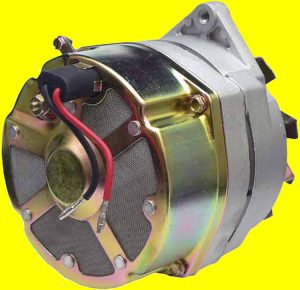
So the trick with this alternator is to wire the red to a switched +12 wire from the ignition switch. The best place for this on a Ford 250ci is from the coil positive. Which on my moter is the opposide side to the alternator.
The black wire is the sense wire, it is not an earth. The sense wire means it is connected to the positive terminal on the battery. This means the internal regulator can measure the battery terminal voltage independantly of the +B terminal and allow constant current charging of the start battery to occur. It’s worth noting that if you are measuring the battery voltage of the console of your boat make sure it’s not from the ignition switch supply, which is wired to the +B pin of the alternator. Otherwise you’ll find the voltage being displayed abnormally high.
So once this was all done it was time to fire her up and give it a test. Nothing like making a video, hopefully these make sense.
Wooo that 3″ wet exchaust on a inline-6 with no muffer sounds good ! Now I can move onto checking the wiring and perhaps sea trials.

